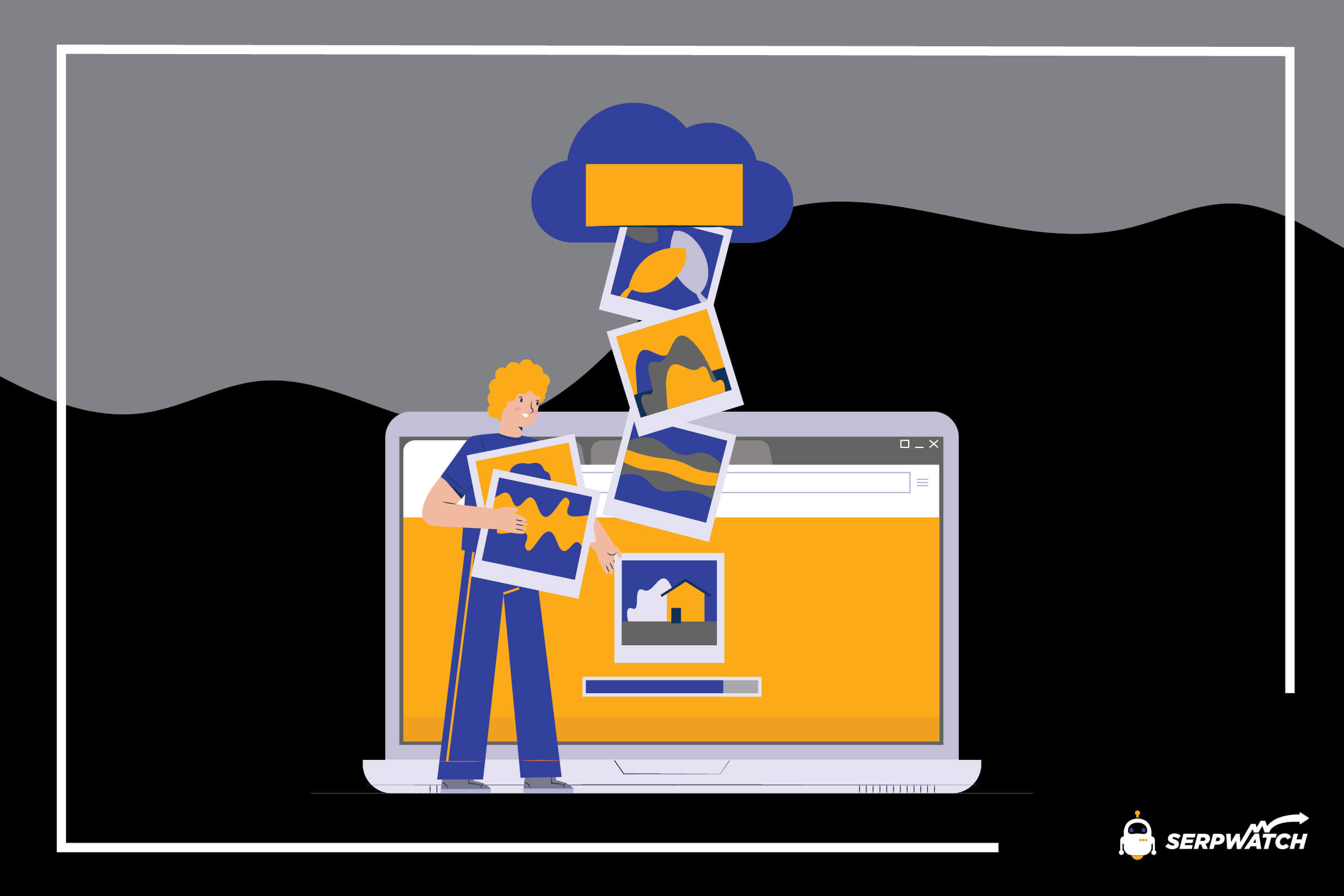
How to Perfect Your Image SEO Strategy in 2024?

Since people are visual creatures, websites with visuals and multimedia are more engaging and entertaining for them. Thus, such websites attract more traffic. Also, images can appear in search results, driving extra traffic to the websites.
Considering that search by image has been gaining popularity lately, image SEO is currently a hot topic. For that reason, this article will cover everything you need to know.
Find in this article:
- What are the basic principles of image optimization?
- Which aspects to pay attention to the most?
- How can images be optimized for WordPress websites?
- What’s the image size limit for the best SEO results?
- Tips on optimizing images for different devices
How Does Image SEO Work?
Image optimization is an integral part of on-site optimization. Since it’s connected to the elements on a website, image optimization falls into the on-site category. Yet, this type of optimization also matters for external factors because it affects website ranking in SERPs.
By optimizing images (and other multimedia content), site owners can significantly reduce page load time. So, is there the best way to optimize images for the web? For starters, the list of practical SEO tips should serve as a guideline.
Nonetheless, optimization is a complex and ever-changing process with several elements to consider. Therefore, SEO professionals can benefit from any tool that automates processes and improves efficiency. For instance, SerpWatch is one of the users’ most significant assets. It tracks ranking changes, allowing them to gain insight into their website’s performance.
How Do Pictures Get on Google Images?
A picture is worth a thousand words and can effectively convey a message. That’s why designers and website owners often include a range of visuals to improve the user experience. Also, they add images to be discovered on Google, the world’s largest search engine.
More precisely, they make it possible for Google to find and present those images in search results. So, in essence, SEO-friendly images will get crawled and indexed by Google. That’s why the pictures should be both appealing and contain relevant keywords.
Considering that Google holds 92.2% of the search engine market share, most marketers optimize content to meet Google’s guidelines. But, of course, other search engines have similar policies, so the primary task is to make images searchable. By doing so, the entire website will appear in search results, together with said pictures.
What Is the Best Image Search Engine?
We’ve already mentioned that Google offers a convenient section for image search results. Thanks to a specialized tool called Google Images, search results will display media results in a set of thumbnail images related to the keyword.
There are five categories of filters in the tools option to help you find more precise results. Those are:
- Size
- Color
- Type
- Time (when posted)
- Usage rights
Even though Google image optimization should be the top priority, specific markets and industries might prefer Bing and Yandex for this type of search. As for the reverse image search, all engines mentioned above offer this option.
How to Optimize Images?
There are several significant aspects to focus on when optimizing images for search engines. First, engines will crawl and check image tags and URLs. So, the ways to categorize all the relevant factors are:
- On-picture
- On-page
- Off-page
The first category refers to image size, format, name, and caption. Next, the alt tag, relevance to the surrounding text, and the title matter the most for the on-page factors. Last but not least, if you want to optimize images for the web, you have to pay attention to external aspects as well. Therefore, the link structure, backlink profile, and image originality are off-page factors.
Understanding the connection between the three categories is the key, as each can affect the other two. One of the advantages of using SerpWatch is that constant rank monitoring will point to an issue if there is one.
How to Optimize Images in WordPress?
Currently, 41.8% of all websites are run on WordPress. So, it’s essential to learn to optimize images and other visuals when adding posts in WordPress. In essence, there are several approaches you can follow when optimizing pictures in this content management system. For instance, one of them is to use a plugin to fill out the required fields automatically.
For some WordPress websites, such as online stores, SEO image optimization is essential. After all, most visitors will leave if images don’t load properly or fast enough.
Thus, website admins should also consider alternative methods to optimize pictures in WordPress. Namely, they should efficiently encode images, avoid image URL redirects, and remove EXIF data. Likewise, they should cache photos and Gravatars, together with delivering lower-quality images to users on slow connections.
Which Plugins to Use to Optimize Images for WordPress?
When you visit the WordPress plugin page, you’ll notice image-specific and general-purpose SEO plugins. That’s because various plugins, such as Yoast, include image optimization alongside many other features. However, if website owners don’t need the complete package, specialized plugins are available. Let’s name a few:
- Optimole
- EWWW Image Optimizer
- WP Smush
- Woo
- Imagify
- ShortPixel Image Optimizer
What’s the Best Image Size for WordPress Blog?
Considering that WordPress was initially designed as a blogging platform, its monthly traffic of 20 billion visits shouldn’t come as a surprise. Now, images play a crucial role in blog posts. They help break up large chunks of text that are unappealing and boring. Visuals in blogs matter for a more practical reason—they help readers understand complex topics, summarize findings, and present data visually.
That’s why, for blogs in WordPress, image SEO can determine their success rate. For instance, it’s best to use 1200×628 pixels for the featured image. By setting up those parameters, the picture will look great on large screens. Plus, it will also be suitable for scaling. In any case, the best advice is to open the website on multiple devices right after uploading or changing anything to see if everything works.
How to Name Images for SEO?
Naming images is vital for showing up on the first page of search engines results. So, instead of the automatically assigned “IMG0000234.jpeg,” it’s better to describe the content. For example, naming the image “dress-backless-cotton-black-lace.jpeg” will help the crawling process and make the picture discoverable.
However, it’s essential to understand that naming images is more than just image filename SEO. In addition to the file you will upload, image titles, captions, alt tags, and even the URL are all part of the naming process. On the other hand, search engines pay extra attention to alternative text and URLs, so we’ll elaborate on the two shortly. As for the title, it’s best to be the same as the file name.
How to Give Image a URL That Will Help Your Ranking?
In simple terms, a URL is an address of a specific website. A URL should also be as descriptive as possible, so it’s best to incorporate the elements mentioned above so that crawlers can easily discover new pages.
For example, if you’re posting a product picture of a black cotton dress, the URL should be something like https://yourwebsite.com/products/womenclothes/dress-backless-cotton-black-lace.jpeg. With the relevant categories defined, the URL makes sense to both users and search engines.
What’s the Role of Alt Text in Naming Images for SEO?
Alternative text is another aspect of “naming images,” but it deals with a technical part. The primary purpose of alt text is to describe the image in HTML code. It gives more context to the image.
The alternative text will show if the picture doesn’t load. However, there’s another reason why alt text is essential. Visually impaired website visitors who use screen readers get the information about the image from the alternative text.
It’s important to avoid two things to achieve the best image description SEO results. The first one is to leave the alt tag blank, in which case our example would look like this <img src=”dress-backless-cotton-black-lace.jpeg” />.
Another common mistake is keyword stuffing within the alternative text. While it may seem reasonable to include many relatable words, experts don’t recommend this practice. So if your alt tag is similar to <img src=”dress-backless-cotton-black-lace.jpeg” alt= women dress summer dress cute dress lace dress short dress best price dress />, search engines will mark it as spam.
Since image SEO heavily relies on alternative text, it could make your rating drop. But with SerpWatch monitoring all changes, you’ll instantly notice if something’s off. So a good example would be <img src=”dress-backless-cotton-black-lace.jpeg” alt= backless black cotton dress for women />. It’s descriptive enough, yet with no keyword repetition. As you probably know, keyword stuffing is a black hat SEO practice and could get your site penalized by Google.
What Is the Best Image Size for SEO?
Over the years, SEO experts and marketers have compiled a list of best practices for search engine optimization. For example, having large files on a website negatively affects the overall user experience.
For this reason, it’s best to compress images before posting. Luckily, there are programs that reduce image size without affecting the quality.
Check out this list to find the best SEO image optimizer for your needs:
- TinyPNG
- Shortpixel
- Optimizilla
- Compressor.io
- Imagify.io
The compression rates vary for different file formats, but you can aim for less than 300 KB. However, there’s another size type—image dimensions. So, again, ideal dimensions vary depending on the website.
What Is the Best Image Size for Mobile?
According to Statista, 54.8% of traffic came from mobile in Q1 of 2021. For that reason, it’s vital to have a responsive website design for images to show on smartphones. It’s important to pay attention to portrait orientation. It’s also best to keep the longest edge, i.e., height, at 1200 pixels.
Moreover, to achieve the best results in SEO, images in WordPress can be adapted for mobile devices using plugins. By making your images responsive, they will be displayed in the right size across multiple devices. Some of the plugins you can try out are:
- WPtouch
- AMP for WP
- Jetpack
- Smush
- Max Mega Menu
These plugins will take care of the website content but also offer extra options for resizing images.
Which Format to Use to Optimize Images for SEO?
Nowadays, the most common file types are JPEG, PNG, and GIF. However, as different parts of a website have specific requirements, marketers might need to adapt the format. For example, while the logo should be a vector image, JPEG and PNG files are ideal for everything else.
There’s another option that Google favors—WebP, a newer image format that Google developed. Yet, this format isn’t universally accepted (e.g., iOS doesn’t support it).
The Takeaway
As seen from this article, proper image optimization can be easier said than done. Hopefully, this article has shed light on the steps required to achieve the most desirable results in image SEO. Yet, the ranking factors and algorithms often change, making it tricky to keep track.
So, SerpWatch can provide peace of mind because the latest version of this SEO tool includes several features that automate processes and help marketers monitor website performance with ease.
Sources
Ahrefs, CodeinWP, ContentKing, DMEXCO, EngineScout, Fancy Crave, Foreground, Google, Hubspot, Kinsta, Search Engine Journal, Search Engine Journal, Search Engine Watch, Semrush, Snappa, StatCounter, Statista, The Visibility Method, Unamo, W3Techs, Website Builder Expert, WordPress, WordPress, WP Beginner, WP Explorer






There are currently no comments.
Be the first!))